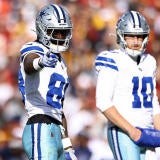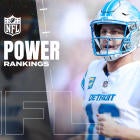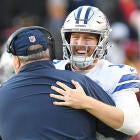For years now there have been three basic classifications for injuries in the NFL. A player dealing with an injury has always either been probable, questionable or doubtful to play in the coming week's game. But not anymore, and it's going to have a huge impact on both real and fantasy football.
As first reported by Armando Salguero of the Miami Heraldand confirmed by Mike Florio of Pro Football Talk, the NFL eliminated the "probable" classification for injury reports beginning in 2016.
The logic behind the decision was "approximately 95 percent" of the people listed as probable ultimately played.
"The 'Probable' category was eliminated from the Game Status Report because approximately 95 percent of the players who were listed as 'Probable' in prior years did in fact play in the game," the league explained.
Previously, probable meant a 75 percent chance or greater a player would play. Questionable was 50 percent chance and doubtful was 25 percent or less a player would play.
Now, according to Florio, questionable means "it is uncertain as to whether the player will play in the game," while doubtful means "it is unlikely the player will participate." Essentially anything greater than 50 percent is questionable, while anything less than 50 percent is doubtful.
These are not entirely different classifications from what they were before. But the difference is now that it will be extremely difficult to ascertain just how questionable a player is for the upcoming week.
If a player was probable, he could easily be 90 percent likely to play. It was unlikely someone would be probable and miss a game. But now if someone is 90 percent likely to play and only listed as questionable, it won't be clear just how good a chance there is of said player playing.
This will give opposing coaches fits, particularly if teams are pushing the limits with respect to what players are listed as questionable and what players aren't on the injury report.
It will also give fantasy football owners fits as well.
As a totally hypothetical example, let's say you own Allen Hurns of the Jaguars and Davante Parker of the Dolphins. It's Week 4 and you want to play Hurns, but he's listed as questionable and there's no clear path for him as to whether or not he'll play.
You'll probably be forced to play Parker against the Bengals on the "Thursday Night Football" game, even though Hurns has a better matchup against the Colts (albeit one in London).
In other words, the biggest issue is that clarity on injuries probably isn't going to happen until about 90 minutes before kickoff for each game, when the inactives are due for every single game.
What's interesting about this move by the NFL is it's ostensibly designed for more clarity when it comes to injuries. But what will happen is it creates MORE interest in the league because people will be clamoring for information as it relates to injuries even more than previous years.
Especially those trying to figure out who will start and who will sit for their fantasy team.

















